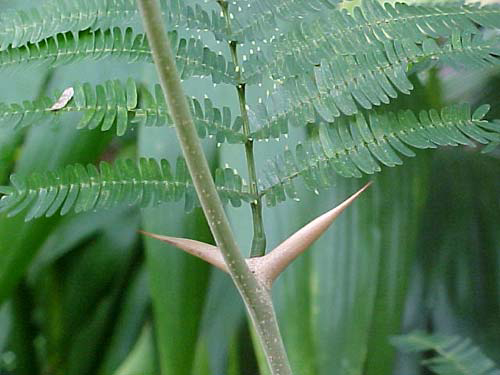Branches and saplings were cut and woven onto wooden frames to create panels called wattles. This wattle-work was then daubed with mud and dung to fill the gaps. A hut could be built in a day and dried out that night by burning a fire inside. Wattle-and-daub huts were common in the early days of settlement in Australia. Various types of acacias were ideal for this work because the plants were plentiful and their cut stems were so flexible. Sydney the city began with a wattle branch!
The term 'wattle' is not the only common name used to describe acacias. Unfortunately though, sometimes the same common name is used for more than one species and this can lead to confusion. The only way to be sure to not confuse people is to use the scientific names. Common names (like the scientific names) can refer to a particular feature of the plant, a place, a person, or be an aboriginal word. Here are a few weird and wonderful common names that have been used for various wattles from different parts of Australia
| Common name | Botanical name |
|---|---|
| Black Wattle is used for many species, including | Acacia mearnsii |
| Blackwood | Acacia melanoxylon |
| Brigalow | Acacia harpophylla |
| Coojong | Acacia saligna |
| Cootamundra Wattle | Acacia baileyana |
| Dagger Wattle | Acacia siculiformis |
| Dawson's Wattle | Acacia dawsonii |
| Dead-finish, Kurara | Acacia tetragonophylla |
| Elegant wattle, Gundabluey, and many more | Acacia victoriae |
| Golden wattle | Acacia pycnantha |
| Horse Mulga, Bowgada, and more | Acacia ramulosa |
| Jam, Raspberry Jam | Acacia acuminata |
| Mulga | Acacia aneura |
| Myall | Acacia pendula |
| Old Man Wodjil | Acacia resinimarginea |
| Silver Wattle is used for a few species, including | Acacia dealbata |
| Stinking Wattle, Gidgee | Acacia cambagei |
| Wait-a-While | Acacia colletioides |
| Western Myall | Acacia papyrocarpa |
| Yarran is used for a few species, including | Acacia omalophylla |
The origin of the scientific name 'Acacia' is not absolutely free from doubt, but it is ultimately derived from the Greek word 'ake' meaning a point. This word refers to the very long sharp spines that are found on many of those spikey acacias which grow around Egypt, Lebanon and North Africa, and which were the first species to be named. Although some Australian wattles are prickly they lack the enormous spines found on their African relatives.
Mud daubing with a spikey wattle would not have started Sydney so easily!

Wattle you know wattle you do?
- How could have a house been constructed cheaply and quickly in Australia during the days of early settlement?
- What is meant by 'wattle and daub'? Find a picture of a wattle and daub hut. What do some African acacias have that can be enormous? Why wouldn't the african wattles be good for wattle and daubing? Make up a bush recipe for wattle and daub huts. Draw a picture, or even try and make a little one!